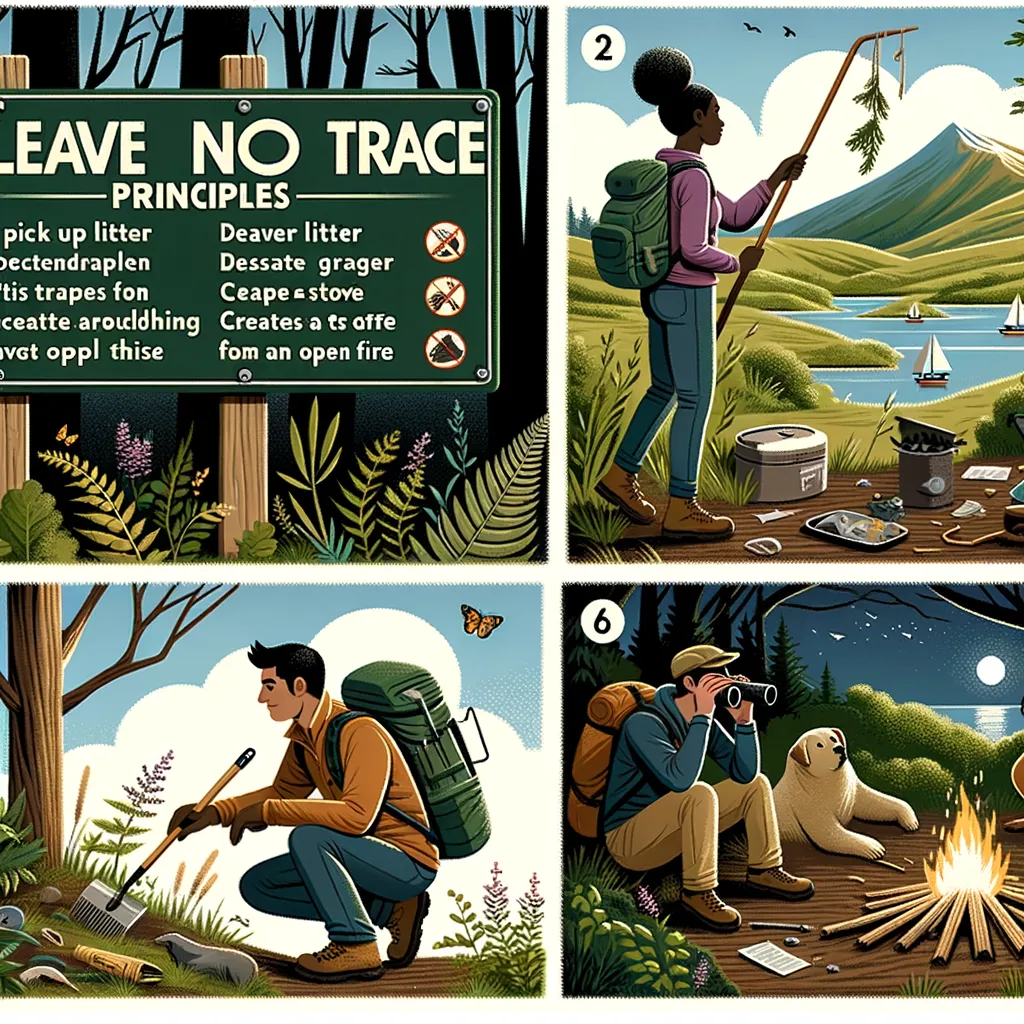How to Build an Emergency Shelter in the Wilderness: A Comprehensive Guide for Parents
Hello, adventurous parents! Whether you’re planning a family camping trip or wanting to arm yourself with survival knowledge, knowing how to build an emergency shelter in the wilderness is essential. This guide is tailored just for you, ensuring you have the know-how to protect your loved ones when out exploring the great outdoors. Are you ready to become a wilderness survival hero for your family? Let’s dive into this lifesaving adventure!
Understanding the Basics of Wilderness Shelters
Before we embark on the step-by-step process of building an emergency shelter, it’s important to grasp a few foundational concepts. The primary purpose of an emergency shelter is to protect you from the elements – be it sun, wind, rain, or even snow. A well-constructed shelter can also provide a cozy haven that boosts morale and gives your family a sense of security in unfamiliar territories.
Selecting the Perfect Location
Finding the right spot to build your shelter is the first and most crucial step. Look for natural protection like a rock face or dense trees. It’s important to stay clear of areas prone to natural hazards, such as falling rocks or flash floods. Flat ground is ideal, but if none is available, ensure the ground slopes away from your shelter to prevent water accumulation.
Materials You’ll Need
Fortunately, Mother Nature provides! For a basic emergency shelter, you’ll mostly rely on materials found in the surrounding wilderness:
- Long branches: For the frame of your shelter.
- Leaves, moss, or pine needles: These will serve as insulation and waterproofing.
- Rope or vine: If available, these can help secure the structure. However, many emergency shelters can be built without the aid of tools or rope.
Designs That Save the Day
There are several types of emergency shelters you can build, depending on your environment and the materials at hand. The three most straightforward and effective shelter designs suitable for beginners are the Lean-To, the A-Frame, and the Debris Hut.
Now that we’ve covered the basics, let’s move on to the heart of our guide – building your emergency shelter.
Step by Step Guide to Building a Lean-To Shelter
The Lean-To shelter is probably the simplest and quickest to construct, making it perfect for emergency situations. Here’s how:
- Find two trees or sturdy posts: They should be about a body’s length apart. This will be the support for your shelter’s backbone.
- Lay a long, sturdy branch across the two supports: This branch will act as the ridgepole, forming the top of your shelter frame.
- Collect smaller branches: Lean these against the ridgepole to form the sides of the shelter. The angle and spacing of these branches will dictate the wind resistance and interior space of the shelter.
- Add insulation and waterproofing: Layer leaves, moss, or pine needles over the frame. Start from the bottom and work your way up, ensuring that each layer overlaps the one below it to shed water effectively.
Your Lean-To is now ready to protect your family from the elements. For added comfort, you can place a layer of soft materials like leaves or ferns inside as bedding. Building this shelter not only ensures your family’s safety in a pinch but also serves as an unforgettable wilderness lesson for your kids.
This guide is the starting point of your journey towards becoming proficient in wilderness survival skills. Stay tuned as we dive deeper into other shelter types and advanced techniques in the next section to fully equip you for your next family adventure.
Remember, the key to a successful outdoor adventure is preparation and knowledge. By learning how to build an emergency shelter, you not only ensure your family’s safety but also instill in your children the importance of respect and understanding for nature. Embrace the challenge, enjoy the bonding experience, and most importantly, have fun while doing it. Because every adventure shared with your family is a treasure trove of lifelong memories.

Mastering Emergency Shelter Construction in the Wild: Essential Skills for Parents
Welcome, adventurous parents! Are you gearing up to teach your family the ins and outs of surviving and thriving in the great outdoors? Building an emergency shelter in the wilderness is a critical skill that can make all the difference. This comprehensive guide is your first step towards mastering this essential aspect of wilderness survival. Let’s get started on this exciting journey together!
Key Insights Before Building Your Wilderness Haven
An emergency shelter is your family’s frontline defense against the unpredictability of nature. Its purpose is multifaceted, providing protection from adverse weather conditions and creating a comforting space that can significantly lift everyone’s spirits. Before constructing your emergency shelter, here are five crucial things every parent should know:
1. Assessing Environmental Conditions
The ability to read your environment plays a crucial role in determining the type of shelter you’ll build. Whether you’re in a dense forest, a mountainous area, or near a water body, each setting presents unique challenges and resources. Understanding your environment allows you to make informed decisions about the location, design, and materials for your shelter.
2. Prioritizing Shelter Location
Choosing a strategic location is critical. Seek out natural barriers for protection against elements and avoid hazard-prone areas. The ideal spot is level, dry, and offers insulation from the cold ground or hot earth. Proximity to water is a consideration, but remember to maintain a safe distance to mitigate the risk of flooding.
3. Gathering Suitable Materials
The wilderness is abound with resources if you know where to look. Familiarize yourself with the types of materials that can be used for different parts of the shelter, such as framing, insulation, and waterproofing. This knowledge will serve you well in times of need.
4. Understanding Shelter Designs
Lean-To, A-Frame, and Debris Hut are three basic yet effective shelter designs that can be adapted based on your needs and environment. Each design has its pros and cons, and choosing the right one depends on factors like weather conditions, the time you have before nightfall, and the materials at your disposal.
5. Involving the Family in Shelter Building
Building a shelter should be a team effort. Involve your family in the process, as this not only makes the task more manageable but is also a valuable learning experience for children. Assigning tasks based on each member’s abilities fosters teamwork and ensures everyone knows the importance of the shelter.
Detailed Instructions for Crafting a Lean-To Shelter
Among the shelter options available, the Lean-To is ideal for beginners due to its simplicity and effectiveness. Here is a step-by-step guide:
- Find two trees or sturdy posts about a body’s length apart to serve as the backbone of your shelter.
- Position a long, sturdy branch across the two supports to form the ridgepole, the top of your shelter frame.
- Collect smaller branches to lean against the ridgepole, forming the shelter’s walls. Consider the spacing and angle for wind resistance and interior space optimization.
- Cover the frame with leaves, moss, or pine needles for insulation and waterproofing. Apply the materials from bottom to top to ensure proper water runoff.
With these steps, your Lean-To shelter is ready to shield your family from the elements. Adding a layer of soft, natural materials inside can enhance comfort, making this basic structure a cozy retreat.
Empowering yourself and your family with the skill to build an emergency shelter in the wilderness is invaluable. As you prepare for your outdoor adventures, remember that the key to success lies in preparation, knowledge, and a positive, problem-solving attitude. By teaching your children these survival techniques, you’re not only ensuring their safety but also imparting important lessons on resilience, resourcefulness, and the profound respect for nature. Embrace this enriching experience and make every adventure an opportunity to learn, bond, and create unforgettable memories.
Disclaimer
The articles available via our website provide general information only and we strongly urge readers to exercise caution and conduct their own thorough research and fact-checking. The information presented should not be taken as absolute truth, and, to the maximum extent permitted by law, we will not be held liable for any inaccuracies or errors in the content. It is essential for individuals to independently verify and validate the information before making any decisions or taking any actions based on the articles.




